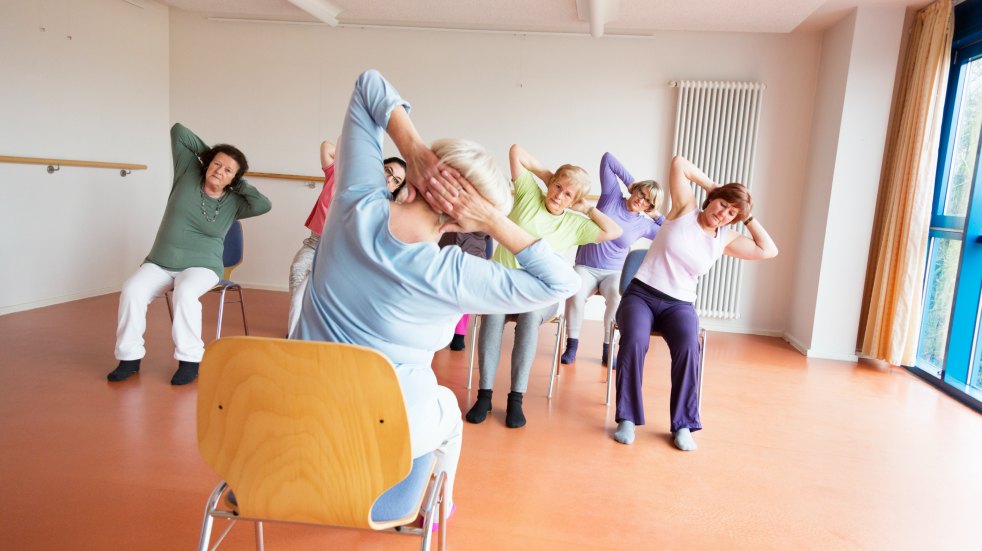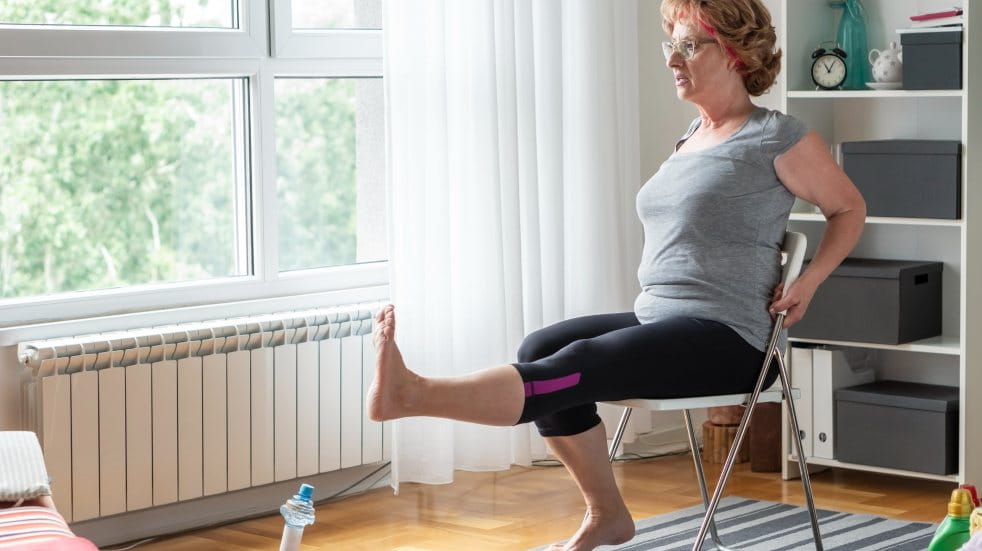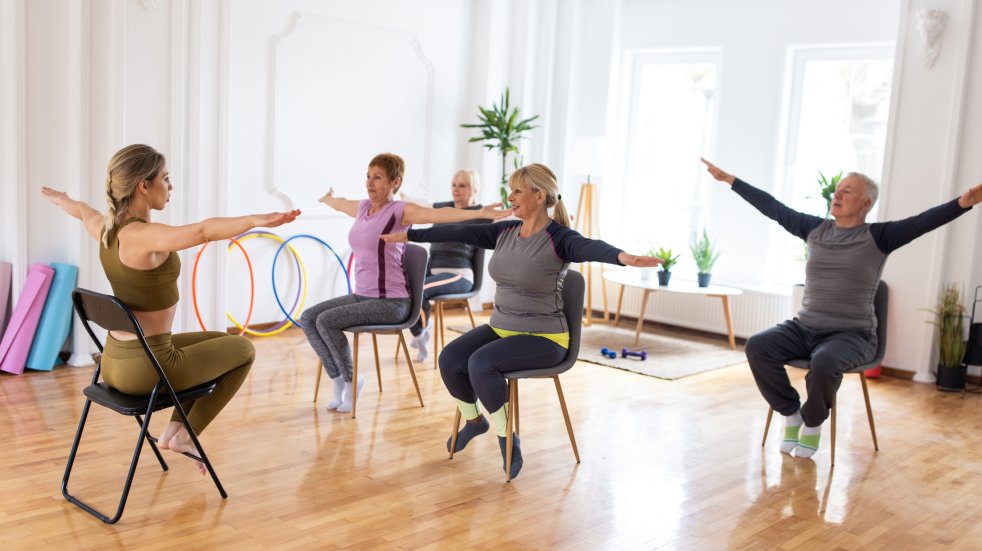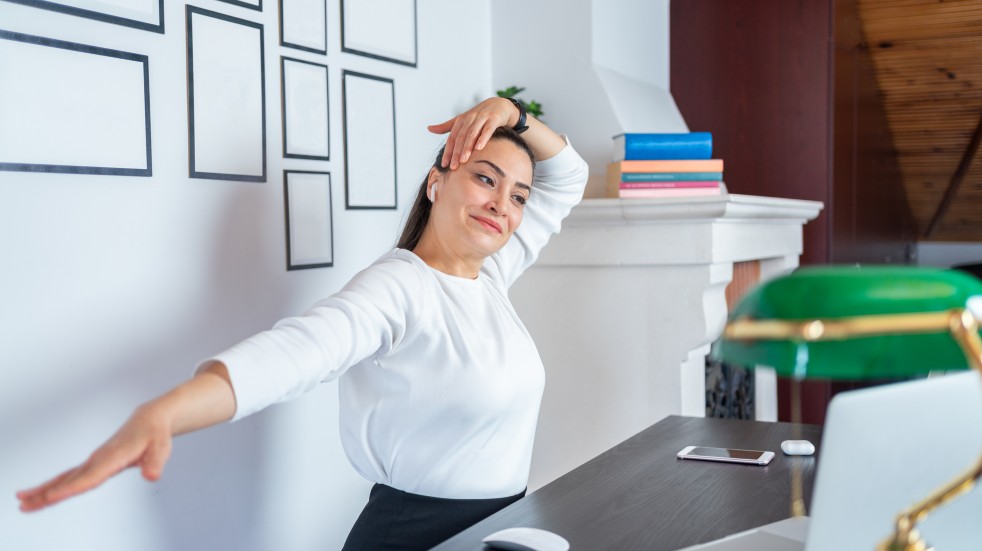
Sitting down all day shouldn’t mean your strength and fitness are compromised
From simple desk-based stretches to full-blown seated workouts, there’s plenty you can be doing to help improve your body strength and general fitness without ever having to leave your seat.
Working a full-time office job, it would be easy to assume the hours spent behind a desk are a write-off when it comes to exercise, or that if you’re managing lower-mobility, it’s impossible to regain strength without being up and about. The reality is, neither of these statements is true.
Whether you’re an exercise expert, looking to burn a few extra calories during your work day, or you’re simply looking to rebuild strength after a period of inactivity, these useful chair-based tips are a great way to start. Recommended by the NHS, these stretches and exercises are designed to burn calories, increase mobility and build strength while you keep your feet up. So kick off your slippers for seven seated exercises that should start you on the journey to improving your strength and overall fitness.
Chest stretches

Chest stretches are designed to improve posture and back mobility. For this stretch, you will need to sit upright with your back away from the chair, pull your shoulders down and backwards, extending your arms either side of your body. Then simply push your chest forward until you can feel a stretch in this area, hold the position for five to 10 seconds before repeating. Great for shoulder pain, regular chest stretches can also help with neck aches, stimulate blood flow, improve breathing and aid your short term flexibility.
Upper-body twist

Designed for upper-back flexibility, upper-body twists are the best way to develop and maintain movement in this part of the body. Starting from an upright position with your feet flat on the floor, cross your arms over your chest, placing your hands on your shoulders. Then, while keeping your hips still, rotate your upper body to the left as far as you can (without discomfort) and hold for five seconds before repeating on the other side. Another simple movement, upper body twists can help to restore movement in your back muscles, realign your spine and improve your balance and stability.
Hip marching
For improving thigh and hip strength (without actually walking) look no further than hip marching, another simple-to-pick-up exercise. Again sitting upright (without leaning on the chair back) holding onto the sides of the seat, lift your left leg as high as you can without discomfort, before lowering it again to the floor in one controlled movement. Repeat this with the right leg for five repetitions. Ideal for balance and coordination, hip marching helps to build strength in your hip flexors, thighs and glutes, helping to prevent falls and injuries.
Ankle stretch

One of the main problems with being immobile for any period of time is a risk of developing blood clots; consequently, ankle stretches should form an integral part of any desk-based workout. Sitting upright, this stretch requires you to hold onto the sides of your chair and raise your leg until it is straight, then, in this position, extend your toes away from you and then back towards you, repeating five times for each foot. Particularly useful for those with issues walking, ankle stretches can help to improve bone density and reduce the risk of injury to the tendons, and ligaments of the ankle.
Arm raises

As with chest stretches, arm raises are also a great way to relieve back and shoulder pain. Sitting upright in your chair, you should begin with your arms at rest before raising them out to the side and finally up as high as is comfortable and then return to your starting position, ensuring that your shoulders are down and and your arms are straight throughout. Great for posture, punctuating your work day with this simple stretch will help to increase your circulation and reduce stiffness.
Neck rotation

Useful for neck and shoulder mobility, neck rotations are particularly useful if you find yourself leaning forward to stare at a screen for significant periods during the day. As simple as facing straight forward with your shoulders down in a seated position, neck rotations require you to do just what the name suggests: slowly turn your head as far as is comfortable towards your left shoulder and then repeat on the right for three turns in each direction. Done regularly, neck rotations can help to improve desk posture and decrease any tightness you may feel in the sides or back of your neck.
Neck stretch

Another helpful technique for reducing neck soreness and stiffness is the neck stretch. Again starting from a forward facing position for this exercise you will need to hold your left shoulder down with your right hand, slowly tilting your head to the right while keeping your shoulder in position with your hand, holding this position for five seconds and then repeating on the other side.
Towel wringing
Useful for building grip strength and improving forearm and wrist mobility, towel wringing is a straightforward exercise that does a surprising amount of good. Simply roll a towel up and begin by twisting it first in your preferred direction as tight as possible, hold for five seconds and then repeat in the opposite direction as you would if you were trying to wring water from it. Ideal for relieving tennis elbow this activity has a range of benefits for both your arm and wrist muscles and bones.
Do more with Boundless
To benefit from amazing offers, along with dozens of other deals on holidays, motoring services, experiences, shopping and more, join Boundless today. To find out how, visit our dedicated membership page.





